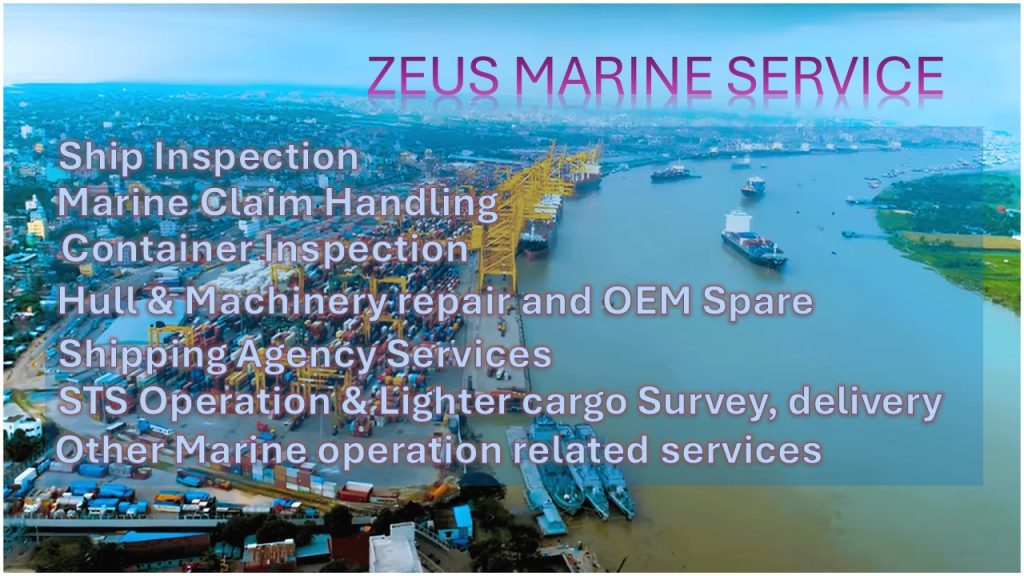Loss adjustment within the insurance industry is evaluating and determining the extent of an insurance claim.
This process activates when insurance companies validate a claim after an incident, and it involves all on-site and remote assessments necessary to accurately evaluate the claim, ensuring that claims are settled fairly and by the terms of the insurance policy.
It can be carried out either in-house or through external companies on behalf of a marine insurance company.
MARINE SERVICE‘s in house experts highlight the main aspects of loss adjustment, these will be:
- Evaluating the extent of the physical damage or loss.
- Determining the cause of the incident or loss.
- Ensuring the claim is covered under the terms of the insurance policy.
- Calculating the amount of compensation due to the insured party.
- The objective is to reach a fair outcome that benefits both parties
Claims MARINE SERVICE‘s expert team are capable to adjust:
In marine insurance, the loss adjustment process is deployed whenever claims are related to casualties and liabilities derived from accidents and incidents. This encompasses cargo, ships and vessels, land-based equipment, and pleasure crafts.
The types of claims that MARINE SERVICE‘s in house experts are able to adjust in marine insurance include:
- Cargo Insurance Claims
- Freight Claims
- Liability Claims
- Hull and Machinery Claims
- Protection and Indemnity (P&I) Claims
- General Average Claims
- Port and Terminal Claims
In cargo claims, the loss adjustment process will focus on evaluating physical damage to the cargo, or its loss during transit, whether due to hazards such as theft, damage, or natural disasters.
Our professional and skilled adjuster will determine the extent of the damage and calculate the appropriate compensation, considering factors such as the cause of the damage, the conditions of transportation, and the specific clauses of the insurance policy.
Let’s look specifically at how the loss adjustment process works for shortage claims.
Loss adjustment for shortage claims
For example, in the case of bulk liquid cargo (BLC) shortage claims, adjuster will focus on comparing the ship’s quantity or weight figures with the tank figures on shore to determine the extent of the shortage.
After the Preliminary Inspection Report by an independent surveyor and examination of the shipping documents and statements of the relevant parties, the adjuster will verify the findings determine liability based on the policy terms, and calculate the value of monetary scarcity.
In these cases, it is worth highlighting the importance of applying measurement standards to ensure accurate assessment of quantities and weights, along with legal awareness when approving and signing BL.
Loss adjustment for cargo theft claims
When cargo goes missing, the adjuster evaluates the loss and calculates the compensation amount based on several key documents: the sales contract to understand the terms of the sale and the value of the goods, the bill of lading (BL) to verify the shipment details and terms, the insurance policy to confirm coverage details and any exclusions, and pre-shipment reports to provide details on the condition and quantity of cargo before shipment.
Additionally, documentation and evidence to establish the liability of the carrier, including security measures and protocols, are reviewed.
Loss adjustment for reefer cargo
Among the most common cases are damages to refrigerated goods. To calculate the compensation amount for the loss in these claims, the adjuster:
- establishes the initial value of the goods before any damage occurs based on the sales contract and market value.
- quantifies the degree of spoilage or damage using inspection and incident reports
- identifies any deviations that could have caused the damage, confirming if the carrier met the contractual temperature requirements.
- reviews the insurance policy for applicable deductibles, exclusions, and coverage limits, and subtracts deductibles from the total claim while considering any coverage caps.
- calculates the final compensation amount by summing up the validated costs, adjusted for the specifics of the insurance coverage, to determine the amount due to the insured party.
How do local and international regulations affect loss adjustment?
International conventions like Hague-Visby, Hamburg, and Rotterdam Rules set frameworks for liability and compensation. This means that during the loss adjustment process, the regulations applicable to the claim in question will set the maximum compensation limits.
An example of maximum compensation limits established by regulations is found in the International Convention on Civil Liability for Oil Pollution Damage of 1992 (CLC 1992).
As a real practical case, it is worth remembering the incident with the ship “Prestige”. In 2002, this oil tanker sank off the coast of Galicia, Spain, causing extensive environmental pollution and resulting in a lawsuit that was settled by the limits of liability established by the CLC 1992. The loss adjustment took these limits into account, which determined the maximum amount of compensation that the insurers had to pay.
Local insurance laws and regulatory authorities define specific procedures and documentation requirements for loss adjustment, such as bill of lading, insurance certificates and inspection reports, ensuring a complete and accurate evaluation. They also define the procedures for submitting and processing claims, including deadlines, formats, and official channels.
Role of subrogation in the loss adjustment process:
During the loss adjustment process, insurers assess the potential for subrogation when determining the cause and responsibility of the loss.
Loss Adjustment Expense (LAE)
Loss Adjustment Expense (LAE) refers to the costs associated with the investigation and processing of insurance claims. These expenses are incurred by insurance companies to determine the validity of a claim and the appropriate amount of compensation.
Examples of allocated loss adjustment expenses (ALAE)?
In the context of marine insurance, LAEs may include costs such as hiring marine surveyors to assess damage to vessels, investigation costs to determine the cause of an accident at sea, and legal fees for resolving claim disputes. For example, if a ship is damaged during a storm, the expenses incurred to hire a surveyor to assess the damage and a lawyer to handle any legal dispute would be considered LAE.
MARINE SERVICE serves as marine loss adjusters & surveyor for marine insurers.
Our legal team provides claims management and loss adjusting services including survey facility.
MARINE SERVICE has vast experience adjusting claims. It is precisely this along with our experienced professionals that makes MARINE SERVICE unique when dealing with marine claims.

